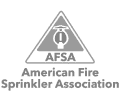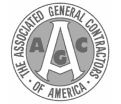Fire Protection for Historic Buildings, Part Four: Implementation
Following the evaluation, selection, and review phase of historic building fire protection, the proposed solutions must be implemented. During implementation, the project team should inspect the work at pre-established critical points in order to verify the original intentions of the design are being carried out. If any construction is required, photographs must be taken before work begins and should be incorporated into the design document to clarify or pinpoint specific areas that need special attention.
Once the project is completed, a second round of photos should be taken to document the final outcome of the work. The photographs can also serve as pre- and post-construction comparison tools.
Code Issues and Fire Safety Systems
Historic building fire safety retrofitting projects are defined by codes and other best practices that guide the implementation process. Specific codes exist for building construction, mechanical systems, plumbing systems, electrical systems, and life safety. Modern buildings are planned for fire safety from the start, using structural, mechanical, and electrical systems as well as materials and construction techniques that include passive fire safety systems and allow for easy implementation of new life safety plans. This makes it much easier to evaluate for fire safety using these codes.
Building and life safety codes are designed to provide minimum standards to protect people, property, and public welfare. They do so by regulating and controlling the design, construction, material quality, use and occupancy, location, and maintenance of buildings and structures. The most widely recognized and implemented life safety code is the National Fire Protection Association (NFPA) Code for Safety to Life, commonly known as NFPA 101. This code is used as the model for almost all other local and federal codes.
Needless to say, adherence to building codes is more difficult in historic buildings than newly constructed ones. In fact, specific codes to guide historic building fire protection retrofitting don’t even exist! As a result, model building codes make special provisions when permitting AHJs to waive code requirements for construction, alterations, and repair of historic properties.
We hope you’ve enjoyed our series on historic building fire protection. If you need to implement a fire safety plan for a historic building in the Houston, TX area, call Kauffman Co. today.
services from Kauffman
We provide estimates for new and replacement fire protection systems throughout Texas (TX) in:
- Alvin
- Angleton
- Austin
- Baytown
- Beaumont
- Bellaire
- Clute
- Conroe
- Deer Park
- Dickinson
- Freeport
- Friendswood
- Galena Park
- Galveston
- Houston
- Humble
- Huntsville
- Jacinto City
- Katy
- La Marque
- La Porte
- Lake Charles, LA
- Lake Jackson
- League City
- Missouri City
- Orange
- Pasadena
- Pearland
- Port Arthur
- Richmond
- Rosenberg
- San Antonio
- Schulenburg
- South Houston
- Stafford
- Sugar Land
- Texas City
- The Woodlands
- Victoria
- Waco
For more information, contact us online or call us now at (713) 893-1090.















